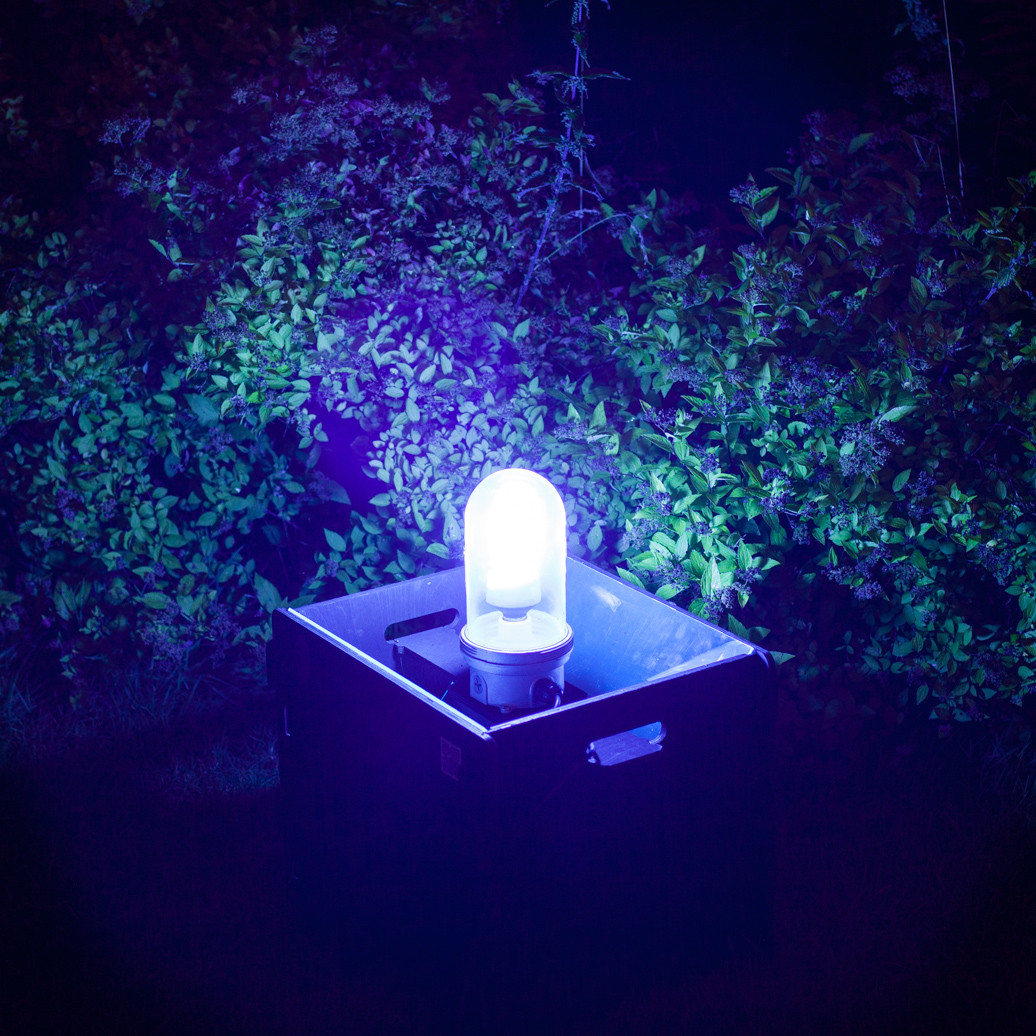
In this brief guide, we will take a look at the main types and designs of moth traps. We will also address many of our most frequently asked questions, including why you will no longer find Mercury Vapour traps for sale at nhbs.com.
Skinner Moth Traps
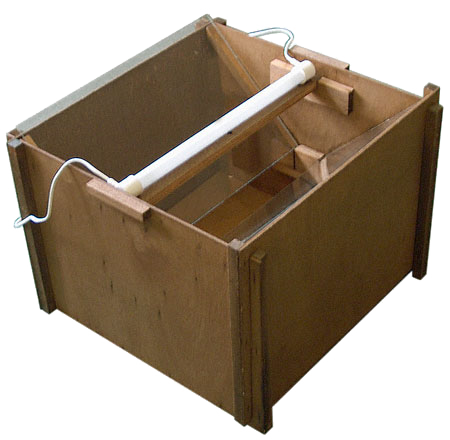 Skinner Moth Traps will attract in excess of 500 moths on a very good night. The main advantages of Skinner Traps are price and portability, and they also let you access your catch whilst the trap is running. Skinner Traps collapse down quickly and easily when not in use, making them very easy to store and transport. They are available with actinic electrics and can be provided with either 240V (mains powered) or 12V (battery-powered) control panels. Lucent traps have a clever design with all components fitting neatly into a suitcase-style case.
Skinner Moth Traps will attract in excess of 500 moths on a very good night. The main advantages of Skinner Traps are price and portability, and they also let you access your catch whilst the trap is running. Skinner Traps collapse down quickly and easily when not in use, making them very easy to store and transport. They are available with actinic electrics and can be provided with either 240V (mains powered) or 12V (battery-powered) control panels. Lucent traps have a clever design with all components fitting neatly into a suitcase-style case.
Heath Moth Traps
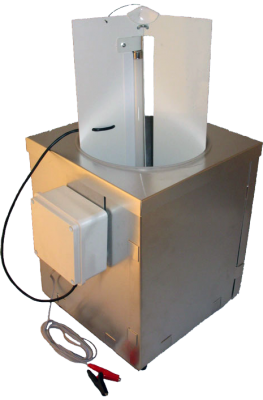 The traditional Heath Moth Trap has a small actinic tube mounted vertically within three vanes that work together to attract and then deflect moths downwards into the holding chamber below. The traps are very lightweight and portable and are usually powered by a 12V battery, although mains powered traps are also available. Variations on the Heath Trap design include the “Plastic Bucket” model which allows the trap to be packed away and carried conveniently. Although catches from Heath Traps tend to be less than for Robinson and Skinner traps due to their lower wattage bulbs, their affordability and portability makes them a great choice for beginners or for use at remote sites.
The traditional Heath Moth Trap has a small actinic tube mounted vertically within three vanes that work together to attract and then deflect moths downwards into the holding chamber below. The traps are very lightweight and portable and are usually powered by a 12V battery, although mains powered traps are also available. Variations on the Heath Trap design include the “Plastic Bucket” model which allows the trap to be packed away and carried conveniently. Although catches from Heath Traps tend to be less than for Robinson and Skinner traps due to their lower wattage bulbs, their affordability and portability makes them a great choice for beginners or for use at remote sites.
Moth Collecting Tents
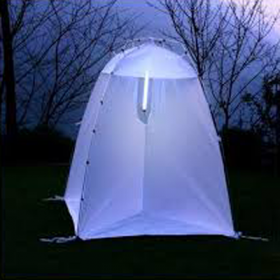 Moth Collecting Tents provide a unique alternative to traditional style moth traps and are ideal for educational use or group trapping events. They consist of a large white fabric structure that is fitted with a UV light source. Moths that are attracted by the light settle on the white fabric and can be observed or collected for study. As the collecting area is large and accessible, it is easy for many individuals to view the specimens at the same time. However, tents and sheets do not have the same retention rates as traditional box-type traps.
Moth Collecting Tents provide a unique alternative to traditional style moth traps and are ideal for educational use or group trapping events. They consist of a large white fabric structure that is fitted with a UV light source. Moths that are attracted by the light settle on the white fabric and can be observed or collected for study. As the collecting area is large and accessible, it is easy for many individuals to view the specimens at the same time. However, tents and sheets do not have the same retention rates as traditional box-type traps.
Moth Trapping FAQs
What kind of trap is best for garden or educational use?
The design of the Skinner Trap means that you can access the catch without having to switch off the bulb. This is particularly useful if you are looking at your catch over the course of the evening, rather than leaving the trap all night and returning to it in the morning. Skinner Traps also have the added benefit of collapsing down, making them easier to store.
Which trap is best for unattended trapping?
Some moths will escape from both Heath and Skinner trap designs, but Skinner Traps will attract a higher number of moths.
Which trap is most portable?
Heath Traps are the smallest and easiest to transport. They can also run off a 12V battery, allowing them to be used in remote sites. The Safari and Ranger Moth Traps are the smallest and lightest traps we sell, so are ideal for travelling.
Why can I no longer find Mercury Vapour traps on your website?
Mercury Vapour bulbs have recently been phased out as part of the Restriction of Hazardous Substances Directive. Therefore, we have removed the traps from our range and are now focusing on actinic replacements. If you have a Mercury Vapour trap and would like to convert it to run with actinic electrics, please get in touch with us to have a chat about this.
What are actinic bulbs?
Actinic bulbs produce a small amount of UV light alongside the visible light which makes them more “attractive” to moths. They are not as bright as Mercury Vapour bulbs but because they don’t get as hot they are much safer to use, particularly for public and attended trapping events. They are also much less of a disturbance to neighbours if you are using the trap in your garden.
What is the difference in catch rates between the different traps?
Skinner Trap will attract the highest number of moths. Heath Traps will retain fewer moths but will still attract the same range of species. You can therefore obtain similar results trapping for a longer period or over several nights in the same area.
Do different traps attract different species?
No, all traps using actinic electrics will attract the same range of species. However, species of macro-moth from different families have been shown to vary in the extent to which they are attracted to a light source. This means that care must be taken when estimating local abundance from the relative abundance of species in your trap as some species will be attracted from a wider area than others.
A full range of moth traps and other entomological equipment is available at www.nhbs.com

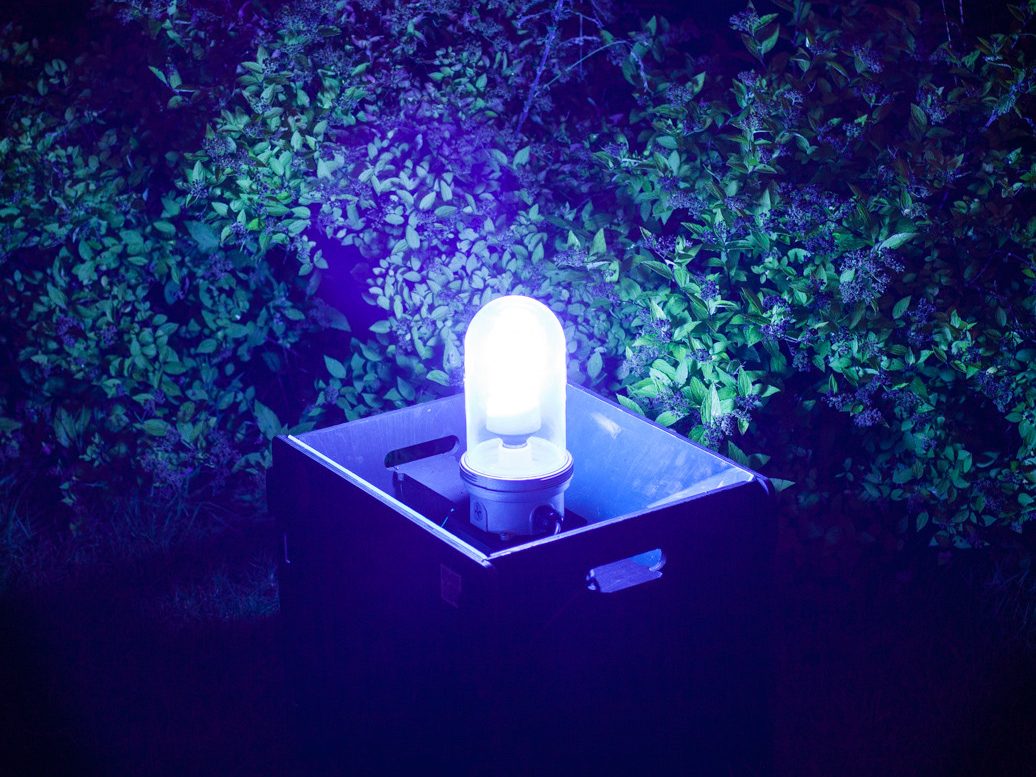
Hi,
Which of the traps comes complete and ready to use?
Thanks
Hi Richard,
All of our mains powered (240V) traps include everything you need to start trapping straight away. They may require some simple assembly, but you do not have to purchase any additional items for them to be fully functional.
Our battery powered traps do not come with either a battery or charger, so these will need to be purchased separately. We usually recommend a 12V 18Ah battery and 2A charger which is compatible with all of the 12V traps that we sell.
None of the moth collecting tents and sheets on our website come with electrics or lamp.
If you would like to discuss your requirements or would like a more detailed recommendation, please feel free to phone us on 01803 865913 or email customer.services@nhbs.com and one of our wildlife equipment specialists will be very happy to have a chat with you.
What is the difference between the different light sources in Moth Traps?
With Thanks
David Toyne
Hi David,
Thanks for your question. Is it the difference between Actinic and Mercury Vapour you are wondering about? Mercury vapour bulbs will attract the largest amount of moths. However, they are also quite bright. If using the trap in a small back garden, you may want to opt for actinic electrics. These produce less light and so are less likely to annoy the neighbours. Mercury vapour bulbs run hot and so need to be protected from the rain to avoid shattering. Actinic bulbs do not run hot and so do not need protecting from the rain. Mercury Vapour bulbs are being phased out as part of the Restriction of Hazardous Substances Directive, hence why the majority of moth traps are moving over to Actinic sources.
Let me know if you have any other questions.
Kind Regards,
Antonia Peacock
Wildlife Equipment – NHBS
What are the best portable moth traps for use in tropical areas where rain can be heavy overnight and where interested observers of the moths and predators can be rather larger than foxes?
Thanks
Chris
Hi Chris,
Thanks for your message. If you’re trapping somewhere without easy access to mains power (or a generator) then a battery-powered trap is your best option. And if you are expecting heavy rain then we would definitely suggest staying away from any traps that use Mercury Vapour bulbs as they can easily shatter if they get wet. Therefore, with these things in mind, I would recommend either the Compact 20W Actinic Heath Trap or the Compact 20W Actinic Skinner Trap (depending on which design you prefer). Both come with a rain guard which would be useful in wet weather. These traps are fairly robust but are still liable to be overturned by larger predators (not something that is usually a problem in the UK!) – perhaps a way of securing the trap or weighing it down might be necessary?
I hope this helps but please feel free to phone up (or email) to speak to one of our equipment team if you have further questions.
All the best,
Luanne
I’m two years into rewinding a 1 a re site with various spp including home grown acorns/oaks and birch -I’d like to do a survey of the moth life – where should I look for a moth trap – battery powered.
Regards,
Hi Tom, we manufacture our own Moth trap that is available with an inverter so it can be powered by a battery.